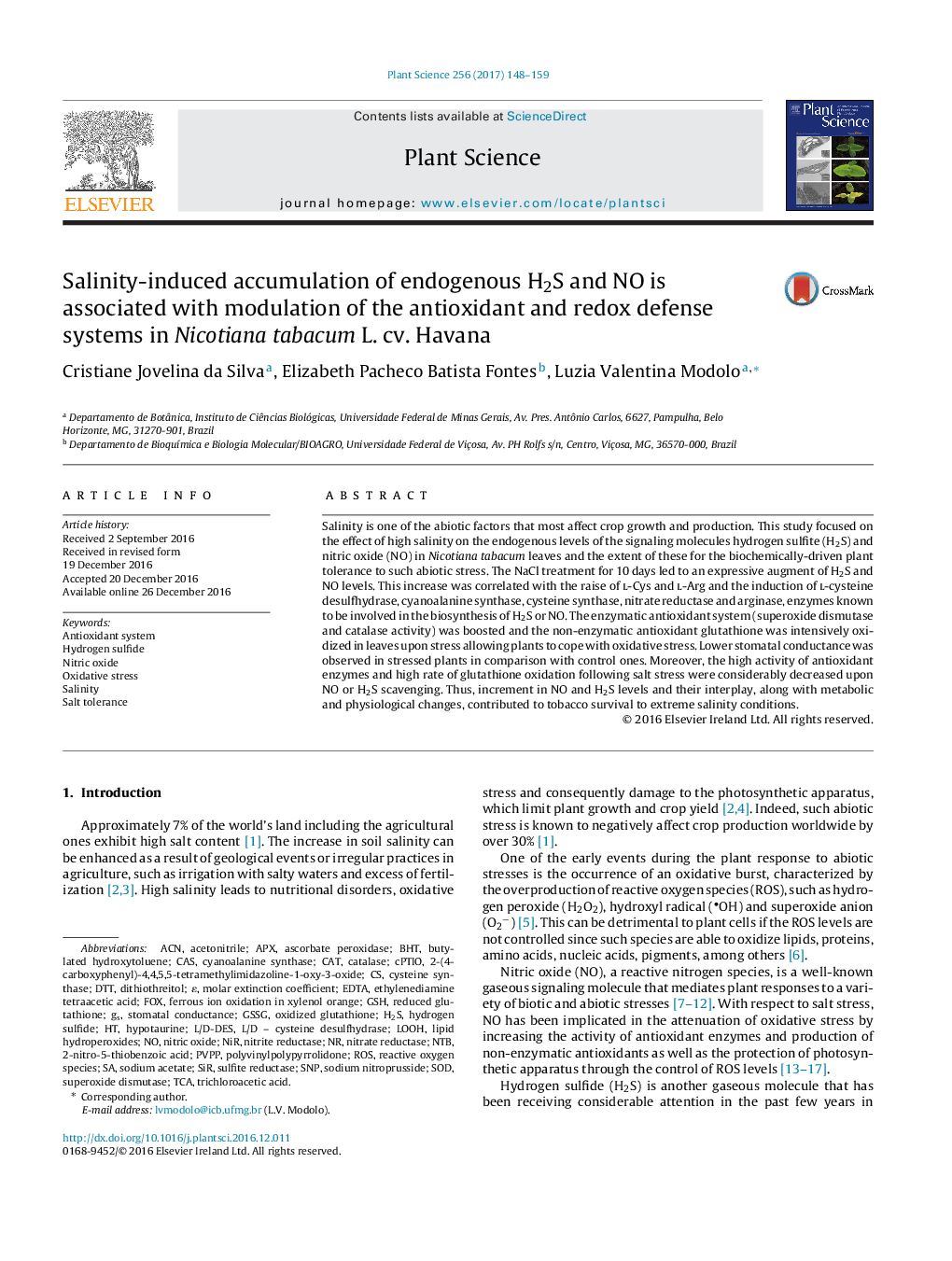| Article ID | Journal | Published Year | Pages | File Type |
|---|---|---|---|---|
| 5515831 | Plant Science | 2017 | 12 Pages |
â¢The H2S and NO contents increased in response to the two concentrations of NaCl.â¢l-DES, CAS and CS were the major sources of H2S in response to salinity.â¢The increase of NO in stressed tobacco leaves was due to the induction of NR.â¢Enzymatic and non-enzymatic antioxidant system was activated with high salinity.â¢Depletion of H2S or NO compromised the response of antioxidant and redox systems.
Salinity is one of the abiotic factors that most affect crop growth and production. This study focused on the effect of high salinity on the endogenous levels of the signaling molecules hydrogen sulfite (H2S) and nitric oxide (NO) in Nicotiana tabacum leaves and the extent of these for the biochemically-driven plant tolerance to such abiotic stress. The NaCl treatment for 10Â days led to an expressive augment of H2S and NO levels. This increase was correlated with the raise of l-Cys and l-Arg and the induction of l-cysteine desulfhydrase, cyanoalanine synthase, cysteine synthase, nitrate reductase and arginase, enzymes known to be involved in the biosynthesis of H2S or NO. The enzymatic antioxidant system (superoxide dismutase and catalase activity) was boosted and the non-enzymatic antioxidant glutathione was intensively oxidized in leaves upon stress allowing plants to cope with oxidative stress. Lower stomatal conductance was observed in stressed plants in comparison with control ones. Moreover, the high activity of antioxidant enzymes and high rate of glutathione oxidation following salt stress were considerably decreased upon NO or H2S scavenging. Thus, increment in NO and H2S levels and their interplay, along with metabolic and physiological changes, contributed to tobacco survival to extreme salinity conditions.
